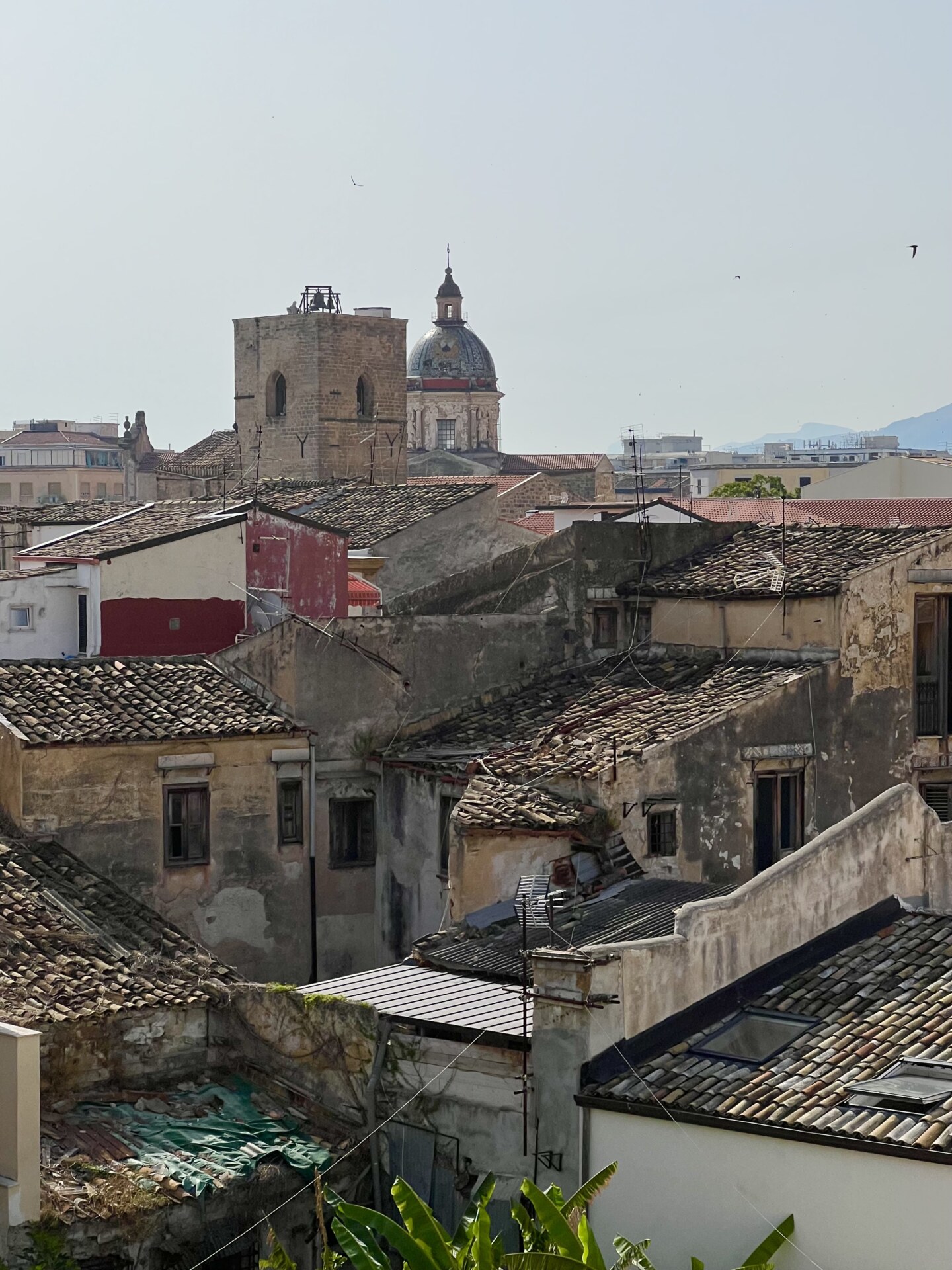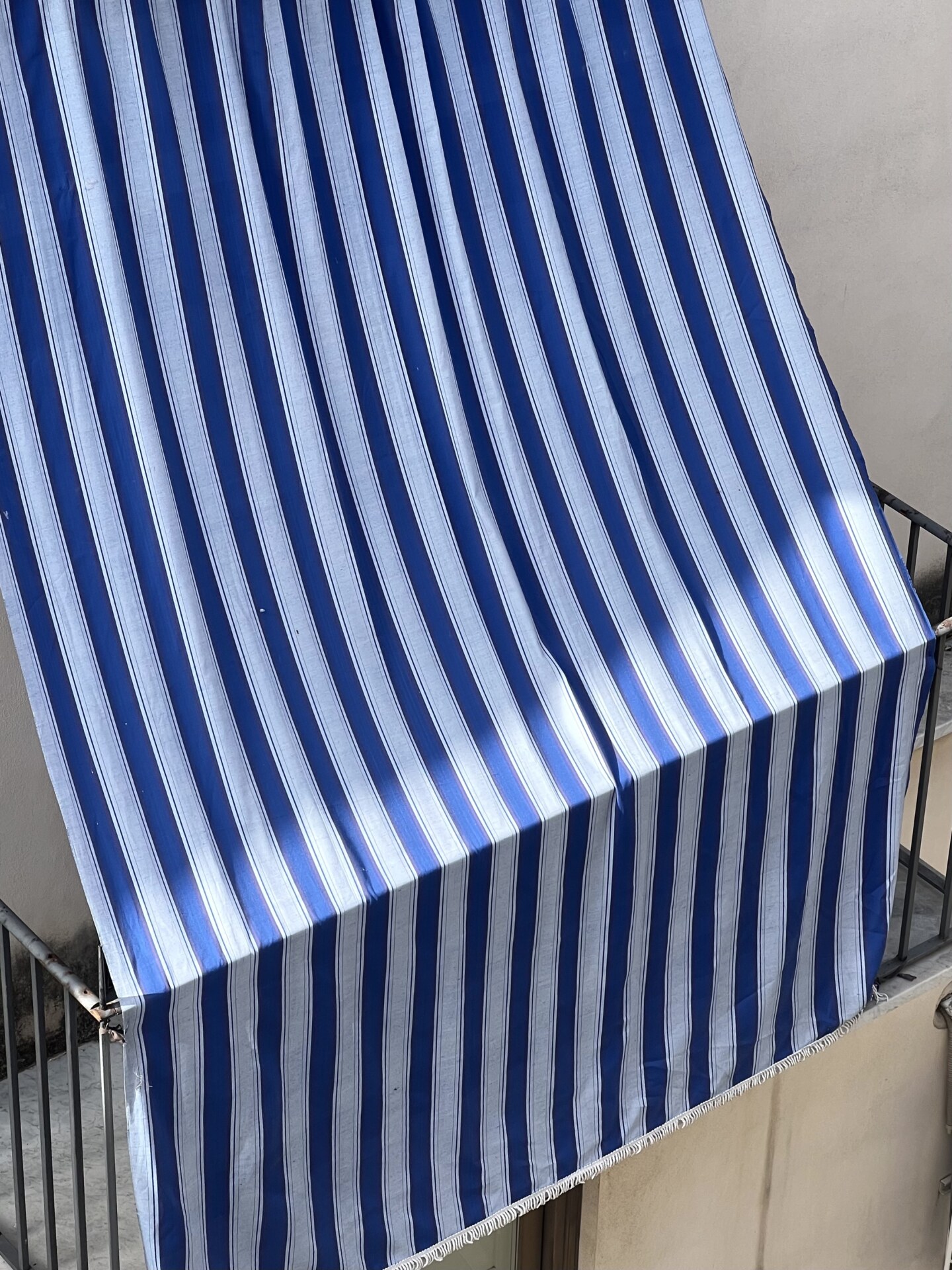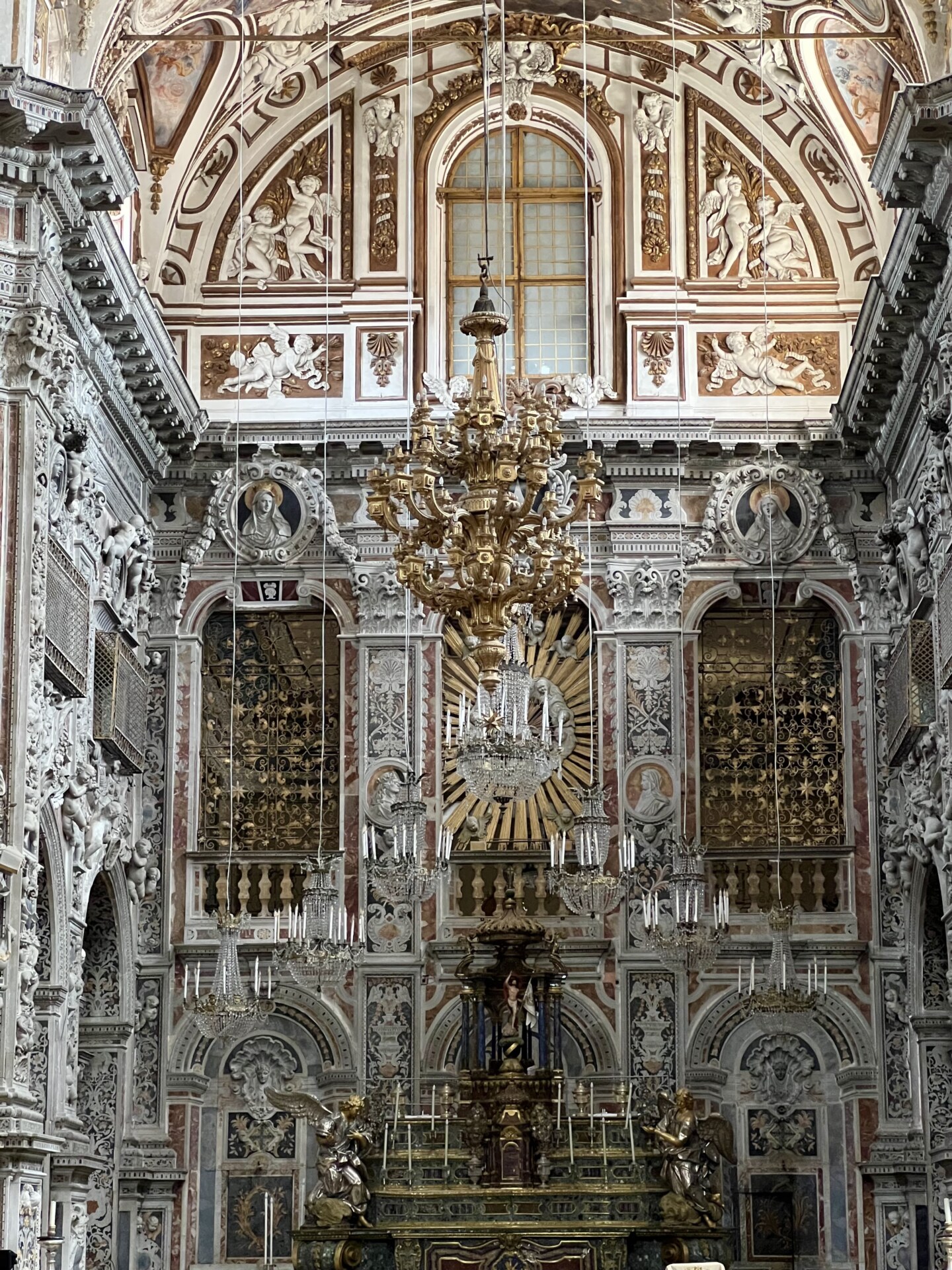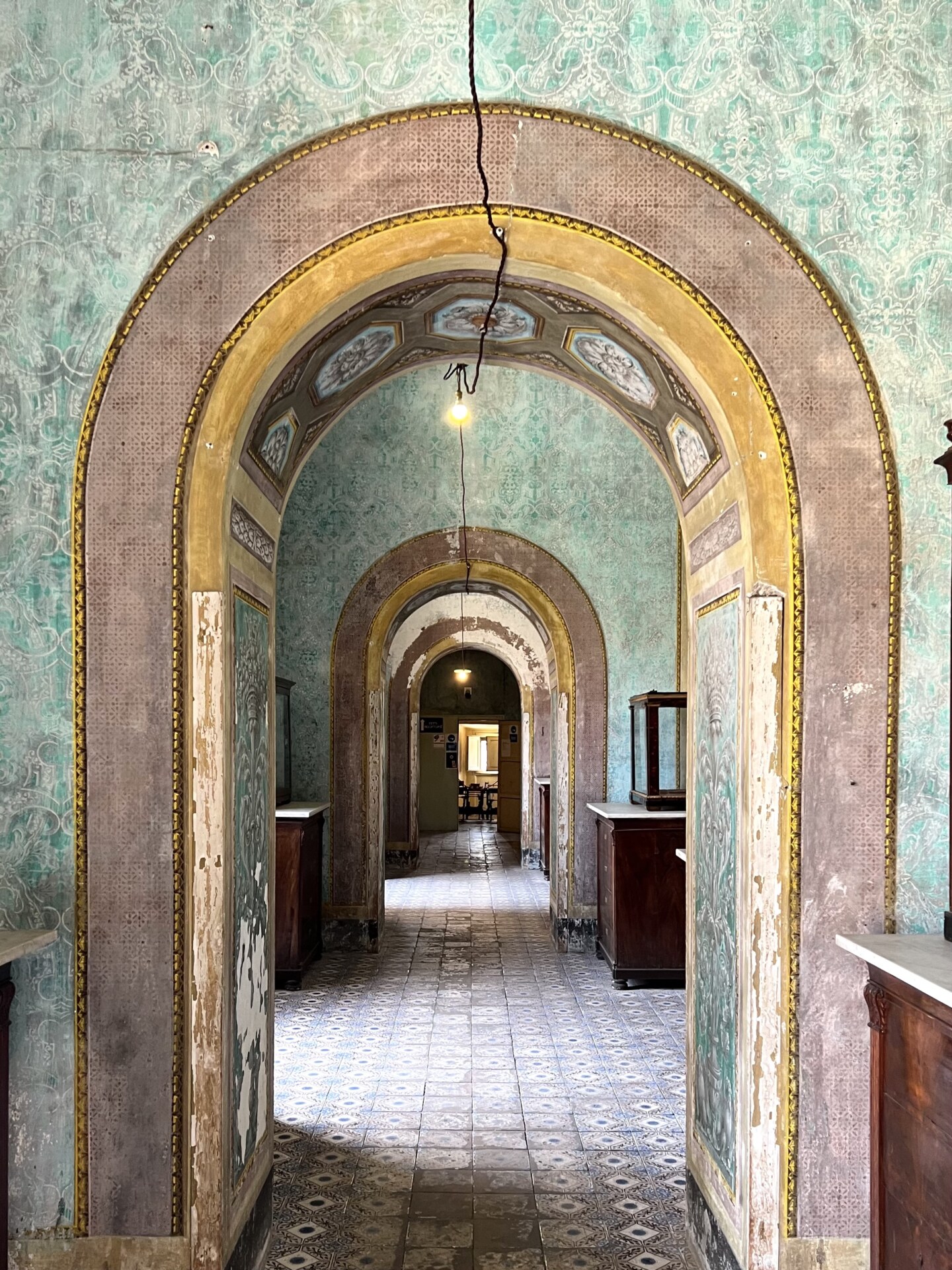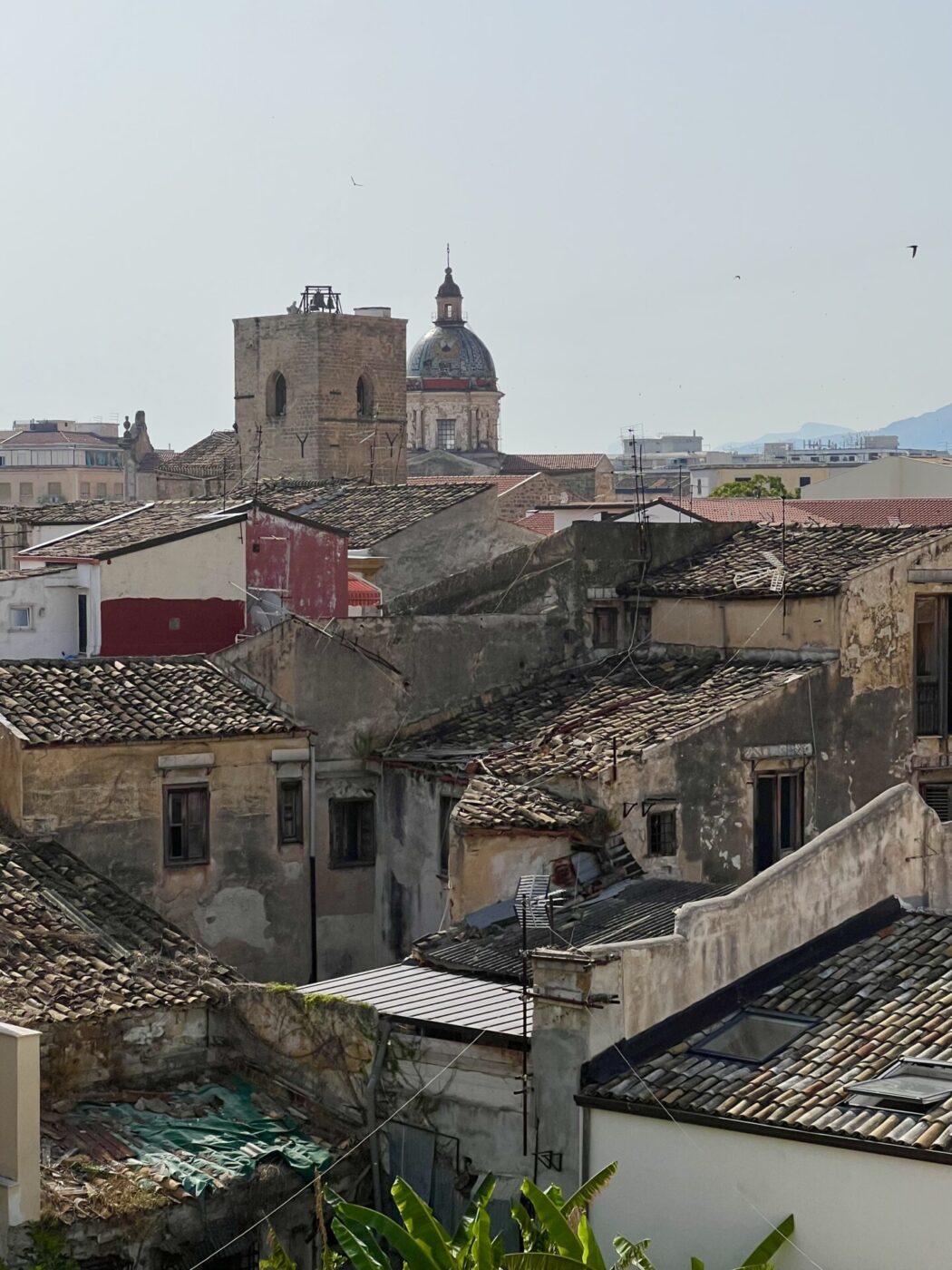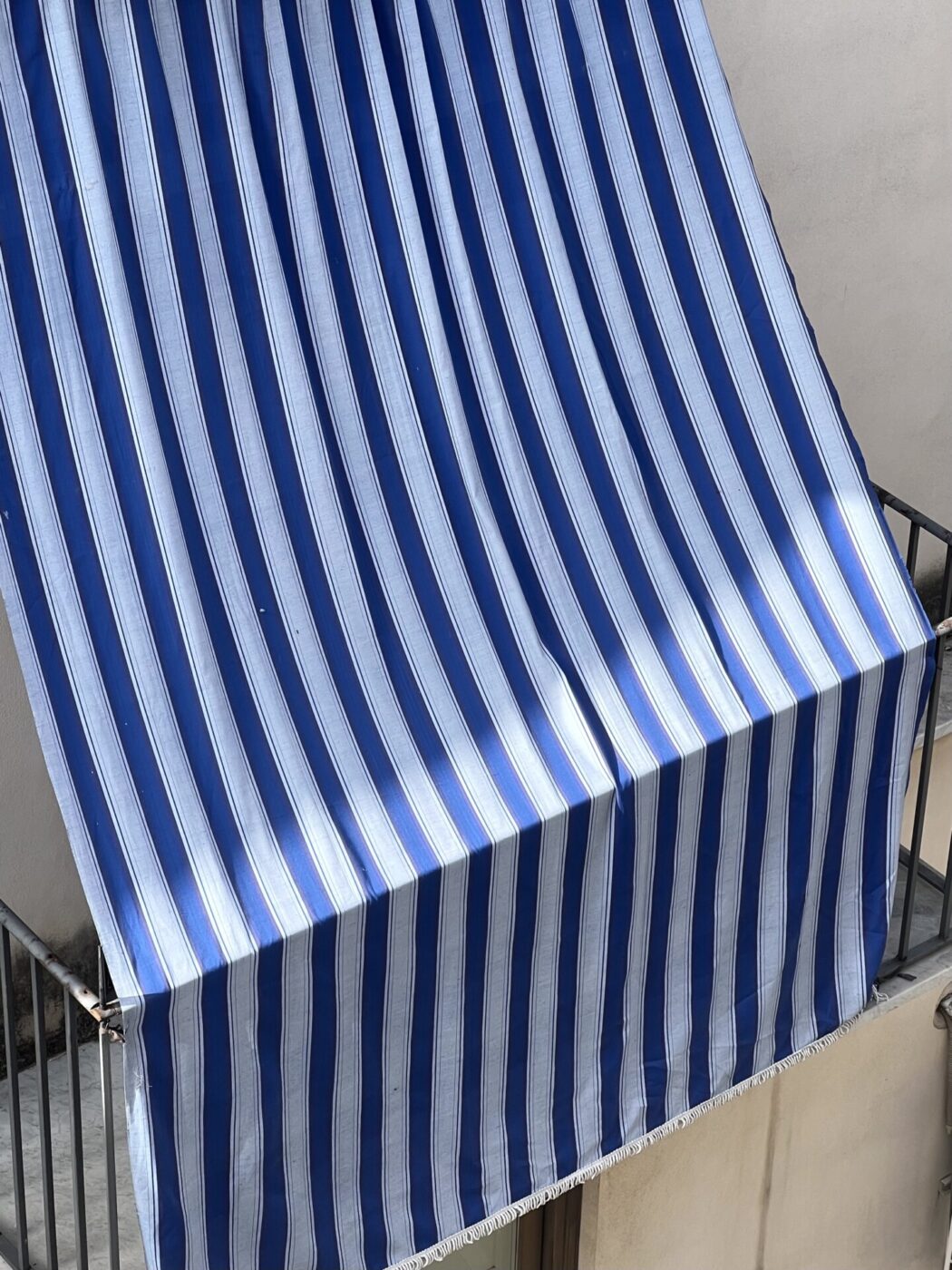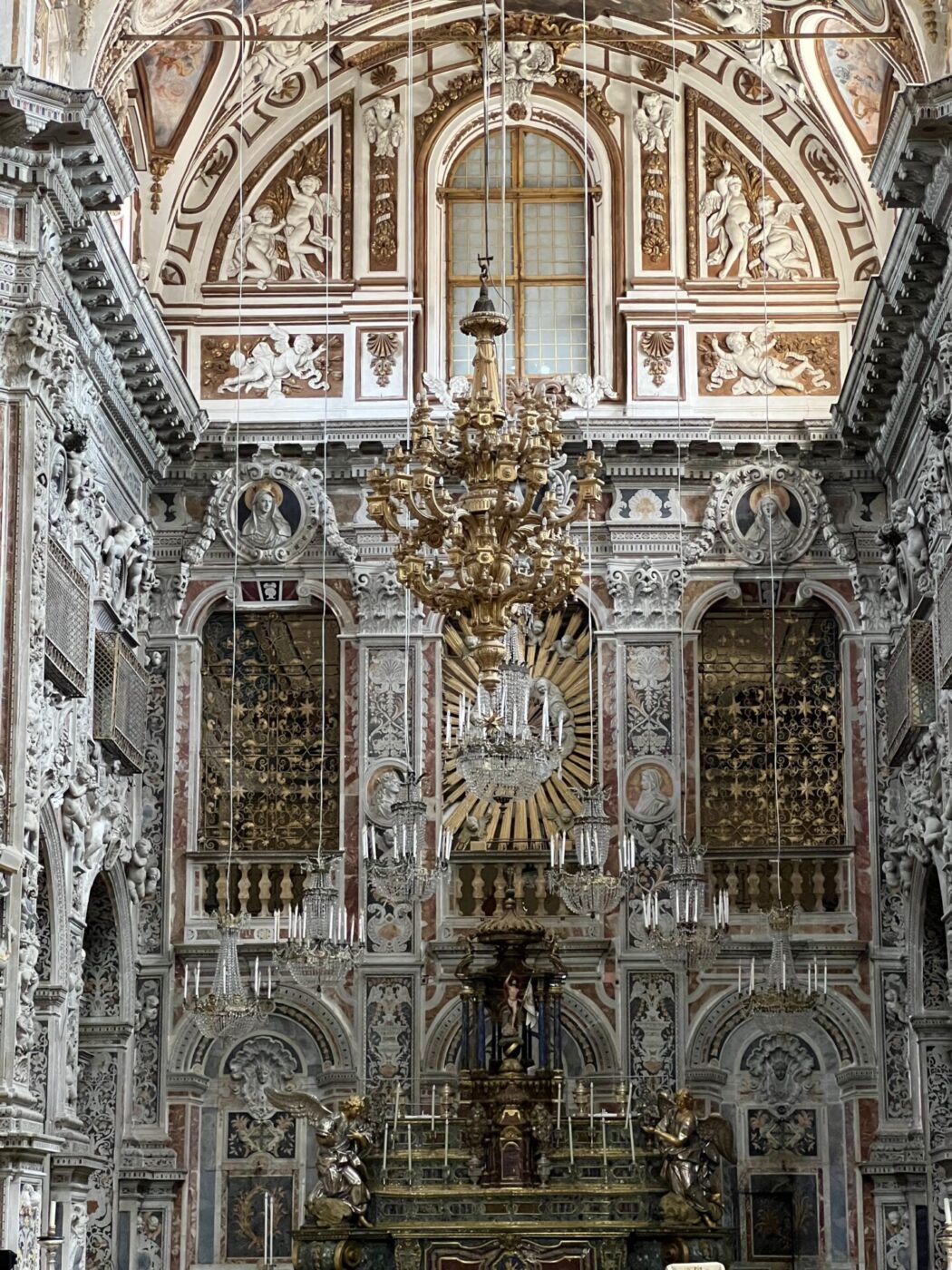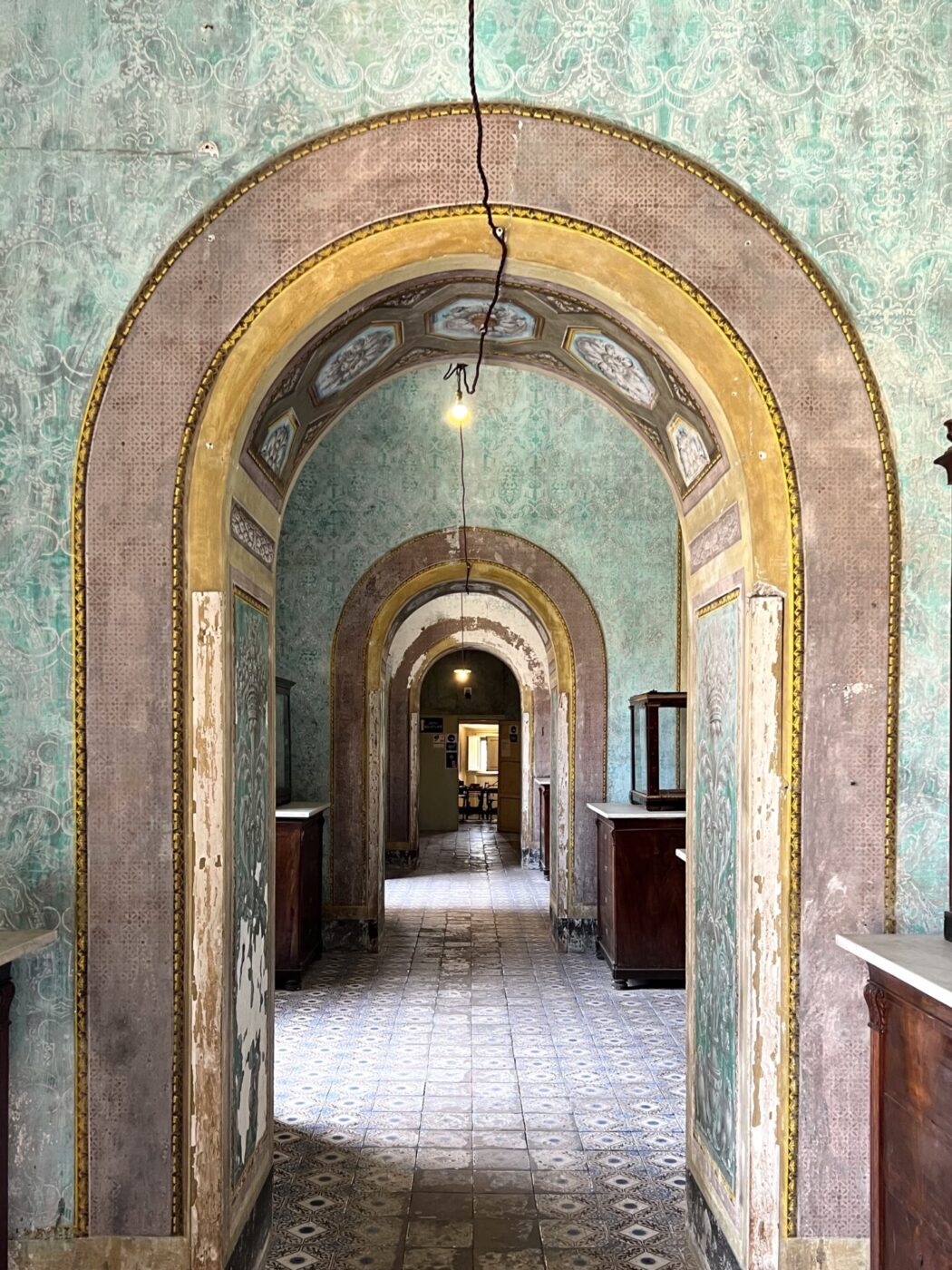Palermo, the vibrant capital of Sicily, is a city full of secrets waiting to be unveiled. Shaped by a multitude of colonizations throughout its long and storied history, the city was originally founded by the Phoenicians in the 8th century BC and was later occupied by the Greeks, Carthaginians, Romans, Byzantines, Arabs, Normans, and Spanish. Each of these civilizations left its mark on the city, leaving indelible traces on the cityscape and a dazzling heritage of cathedrals, red earth-colored domes, mosaics, muqarnas ceilings, ogival arches, and majolica. It makes sense that a few secret gems got buried underneath these layers of history and lost in the bustle of the city. Of course, don’t miss Palermo’s classics–Norman Palace, Cappella Palatina, etc.–but if you’d like to avoid the tourists and the crowds (especially in the summer), here are 10 off-the-beaten-path places you’ve (probably) never heard of:
Stanze del Genio
The Stanze del Genio museum, named after the enchanting Baroque fountain located just steps away, is a captivating treasure trove of majolica tiles. Nestled in a private apartment in the charming Kalsa district, one of Palermo’s oldest and most picturesque neighborhoods, the museum boasts a stunning collection of over 5,000 Sicilian and Campanian tiles, dating from 1500 to 1900 and spanning styles from neoclassical to Art Nouveau. Each of the brightly-painted tiles, which embellished the residences of bourgeois and aristocratic families, is a testament to a particular era, family history, rivalry, or trend.
Stanze del Genio is open Tuesday through Saturday from 4-6 PM, and Sunday from 10 AM to noon.
Serpotta’s Oratories
In Palermo’s historic center lies a myriad of oratories (small chapels). These single-nave structures with apses were erected during the late 16th and 17th centuries, providing a sacred space for members of confraternities to gather. Despite bombings, three oratories of unparalleled beauty remain: the Most Holy Rosary in Santa Cita, San Domenico, and San Lorenzo, all decorated by the great stucco artist Giacomo Serpotta. Serpotta’s work here cemented his status as Europe’s greatest stucco artist and earned him many commissions to embellish churches throughout Sicily–particularly during the Sicilian Baroque–revolutionizing Palermo’s face.
Oratorio del SS. Rosario in Santa Cita is open daily from 10:30 AM to 5:30 PM; Oratorio di San Lorenzo is open daily from 10 AM to 6 PM; Oratorio di San Mercurio is open Saturday and Sunday from 10 AM to 6 PM.
Camera delle Meraviglie
The Blue Room, also known as the Chamber of Wonders, is a hidden gem in one of the Norman districts. Its discovery was accidental, as it belonged to private owners who decided to renovate their house just a few steps away from the bustling Ballarò market. While peeling off a portion of the plaster, a deep ultramarine blue color emerged, revealing silver Arabic inscriptions. These inscriptions, which are read from right to left in Semitic language practice and from left to right in Latin, bear numerous religious references, including the symbolic number seven. Despite being dated to the late 1800s, the identity of the creator of this masterpiece remains a mystery. While some believe it was a place of prayer or an oriental room in a wealthy bourgeois house, others interpret it as a place of meditation.
Camera delle Meraviglie has recently undergone a temporary closure–for up to date opening hours, check their website before you go.

Camera delle Meraviglie
Cappuccini Catacombs
Palermo’s Capuchin monastery in the Cuba district is known worldwide for its tunnels, which, dug in the 500s, house some 8,000 corpses. The mummies are categorized by gender and social hierarchy, despite the reality that the embalming process was very expensive, so the bodies likely all belonged to upper-middle class folk. The catacombs, with their very eerie origins, have been a destination for travelers since the 18th century. It was the friars of the convent who wanted a burial place more fitting to them, so excavation began behind the church of Santa Maria della Pace in the late 500s. To accommodate the wealthier and emerging classes, more and more digging was done over the centuries.
The Cappuccini catacombs are open daily from 9 AM to 12:30 PM and from 3 PM to 5:30 PM.
Church of Santa Maria dello Spasimo
The church of Santa Maria dello Spasimo is a roofless, deconsecrated church where the walls reach directly up into the blue sky of the city. The complex was built by the Benedictine monks of Monte Uliveto in 1509, and was used for defensive purposes during the period of Turkish threat. From then on, the Church of Santa had several lives, from refuge to theater to lazzaretto during the plague of the 1600s to a storehouse of used furniture. The building has three naves and its imposing arches are typical of late Gothic architecture, with Iberian influence. The name “Spasimo” is linked to a work by Raphael, “The Spasm of Sicily”, commissioned by the monastery in 1517. Painted in Rome and then shipwrecked during the sea voyage to Sicily, the painting was miraculously found in Genoa before being acquired by the Spanish viceroy of the Kingdom of Sicily. Today, it hangs in the Prado museum in Madrid, much to Palermo’s chagrin.
The Church of Santa Maria dello Spasimo has recently undergone a temporary closure–for up to date opening hours, check their website before you go.
Palazzina Cinese
Designed and built in 1799, the majestic Palazzina Cinese on the edge of La Favorita Park is one of the finest examples of the chinoiserie fashion that was introduced in architecture, ceramics, textiles, painting, sculpture, and furniture. Chinoiserie style was so popular that floral motifs, dragons, pagodas, bamboo plants, costumes, and oriental hats were introduced in many European countries: Italian gardens–with their geometric rigor and classical harmony–were replaced by the freedom of diverse, irregular, romantic landscapes. The palace’s apartments are spread over three floors with a pagoda roof, and the style is eclectic with Chinese motifs, painted cloth panels, and boxwood mazes. A particularly interesting fixture is a mathematical table with a wooden mechanism that allowed serving dishes to arrive directly on the table without the presence of servants.
Posted hours can be inconsistent, so call ahead to make sure it’s open when you want to visit. The Palazzo Cinese can be reached by phone at 091 6391111 or email at [email protected]
Palazzo Butera & Valsecchi Collection
In the heart of the Kalsa neighborhood, Palazzo Butera is an extraordinary place, built by the prestigious Branciforti family, who entrusted the project to well-known Baroque architect Giacomo Amato. In 1759, the palace suffered a fire, and was later renovated in a more modern style and joined with the adjacent palace, then owned by the Moncada princes of Paternò and the counts of Caltanissetta. In 2016, Palazzo Butera was purchased by collectors Massimo and Francesca Valsecchi, who began restorations and converted the space into an art museum. The enormous Valsecchi collection, now on display, is composed of archaeological pieces, exquisite porcelain, early 20th-century furniture, and unique pieces of contemporary art.
Palazzo Butera is open from Tuesday to Sunday from 10 AM to 8 PM.
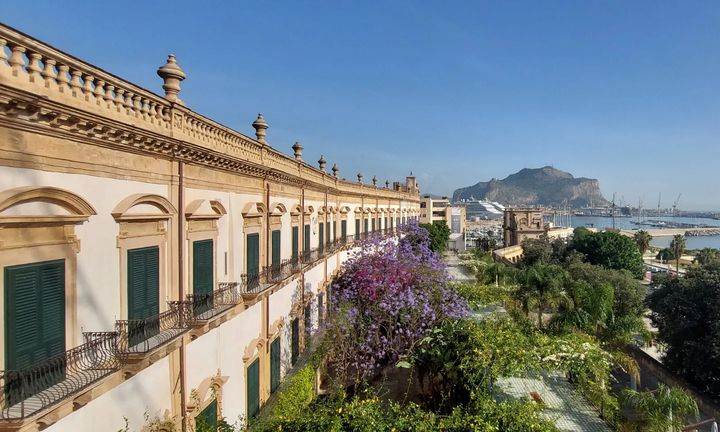
Palazzo Butera
Cripta delle Repentite
The Repentite crypt has a scandalous history. Located in old Palermo on Via dei Biciclettai, the building’s history dates back to 1512 when a noble citizen, Vincenzo Sottile, had a church dedicated to Santa Maria della Grazia built on the site of his family’s home. The church later became a convent for women who were reformed from sex work and had decided to take up the monastic life “in atonement.” Hence, the name repentite. Some working courtesans, however, provided for the upkeep of the monastery by paying a tax, and, in return, they were allowed to dress in luxurious silk clothes, those conventionally worn by “honest” women in the Sicilian city. Above and beyond its sordid roots, the Repentite crypt is worth seeing for its 17th-century altar, covered with majolica ceramics and tiles depicting the figures of a nun and a friar, with the eerie preserved bodies of nuns placed on either side.
Cripta delle Repentite is open Friday, Saturday, and Sunday from 10 AM to 6 PM.
Palazzo delle Poste
Post Office buildings for us Italians are somewhat of local landmarks. Most go unnoticed, architecturally speaking, but one exception is the poste in Palermo. The building was inaugurated in 1934 as an emblem of progress, in full rationalist and modernist style. Angiolo Mazzoni, commissioned by the fascist regime, conceived of a functional building: a social center where parcels and telegrams were sent and taxes paid, but also as a symbol of prestige, embellished with gray marble on the exterior and pink and green in the interior. The building is relatively imposing thanks to its fifty-meter-high colonnade and use of materials like marble, granite, Billiemi stone, and mosaics.
Over the years, references to the ideology of the fascist regime have been eliminated, and many of the canvases that were taken off the poste’s walls have been featured in an exhibition at the Guggenheim. But the unique building still serves as a living futurist museum.
Palazzo delle Poste is open Monday through Saturday from 8:20 AM to 7:05 PM.
Palazzo Alliata Villafranca
Palazzo Alliata di Villafranca is one of the oldest historic mansions in the city. As is very often the case with aristocratic palaces, its history is inextricably linked to that of one of the island’s most important families, who inhabited it for nearly three centuries. The palace was built in the historic center, and the complex dominates an entire block. Originally built in the 16th-century, the Alliata family acquired it in the mid-1700s; in the mid-18th century, the most distinguished craftsmen of the time were commissioned to participate in the renovations. The mansion now houses an art collection with Flemish works inside, including Van Dyck, two canvases by Matthias Stomer, and a series of family portraits displayed in the Salone dei Musici.
Palazzo Alliata Villafranca is open Friday through Tuesday from 10:30 AM to 5:30 PM.
